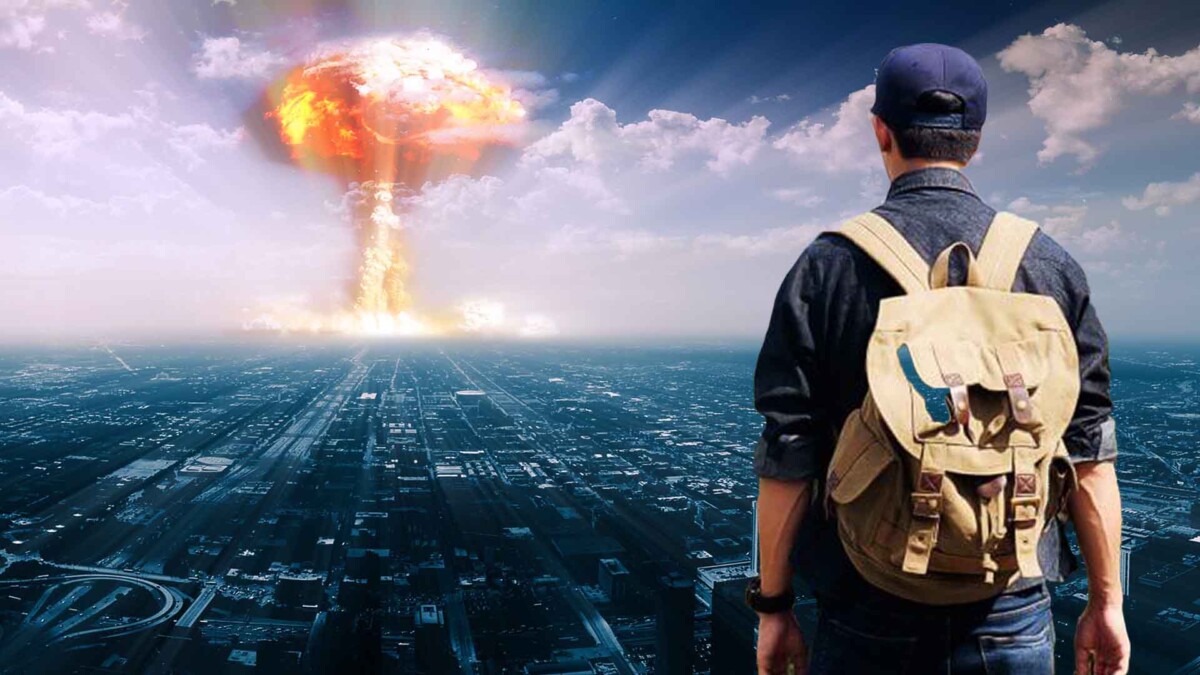If a nuclear war or accident were to happen right now, and if the blast was in your general area, do you believe you would be able to survive it? While the mere thought of a nuclear bomb hitting within your general vicinity may make it seem like it will be impossible to live through, the truth is your chances for survival can be greater than you expect if you know what to do.
In this article, we’ll cover the basics of building a DIY nuclear shelter, the supplies you need to outlast a nuclear disaster, and what to do if the nuclear blast occurs while you are away from that shelter.
BUILDING A NUCLEAR SHELTER
Once a nuclear attack or accident has occurred, it won’t be safe to venture outside of your shelter for days if not weeks. This necessitates two things: having a shelter in the first place, and having a large enough stockpile of food and supplies within that shelter to last you for at least two weeks.
Your nuclear fallout shelter will need to completely cover you and offer ample protection from the initial blast as well as the resulting radiation. Granted, the type of shelter you can build on your own likely won’t protect you if the blast occurs directly on your or very close to you. For that, you’re going to need to have an expensive shelter professionally built to have any chance of survival. This type of shelter is assuming that you’re a few miles away from the initial blast and have been able to hide yourself in it before the actual blast has occurred.
The walls of your shelter will need to have walls constructed out of the following and to the following thickness:
- 2 ½ Feet of Concrete
- 3 Feet of Rock
- 1 Foot of Steel
Again, your shelter needs to completely cover you, so plan on building a shelter to these specifications on all sides, including the ceiling. In addition, you’ll want to have some additional protection around that. An excellent idea will be to have your nuclear shelter be underground, so that it consists of the concrete, rock, or steel to the above specifications and then further protected by the Earth.
STOCKPILING YOUR SHELTER
Since you could be staying in your shelter for weeks, stock it up accordingly. If you have a family, remember that you’ll have extra mouths to feed as well. At a minimum, your shelter will need the following stockpiled:
2 Weeks Supply of Non-Perishable Foods
- Non-perishable food is food that can last years before going bad. This includes survival classics such as beans and white rice, in addition to pasta, oats, sugar, wheat, dried vegetables and fruits, and honey.
1 Month Supply of Water
- Every person will need at least one gallon of water, for drinking and personal hygiene purposes, every day. For a family of four, this translates to 120 gallons for a month’s supply. That’s a lot of water, but it is doable and it’s important for your survival. Keep your water stored in both big, stationary plastic containers as well as smaller bottles for ease of transport. Also keep purification tablets and a water filter on hand as well.
Communication Gear
- This is both so that you can be informed of the situation and to get in touch with anyone else you know. While you should have your cell phone with a solar charger in the event cell service has not been disrupted, you will also want an NOAA weather radio that will broadcast critical information every day.
Spare Clothing
- To be on the safe side, you’ll want every square inch of your skin to be covered, especially when you’re outside in order to stop radiation burns. Include long sleeve shirts, jackets, coats, goggles, gloves, hats, pants, socks, and boots for each family member.
First Aid Items
- Include a complete first aid kit in your shelter, and make sure you’ve been trained to use all its contents.
WHAT DO YOU DO IF YOU’RE AWAY FROM YOUR SHELTER?
The above information is great to know, but what do you do if you’re away from your shelter when the blast hits, such as if you’re away in town? Does this mean that you’re screwed and should say a quick prayer before being incinerated?
Not necessarily. While your chances of survival are certainly lower in this scenario, you still have a chance to survive the blast. The heat from the nuclear blast will be intense enough up to twenty miles to melt the skin off of your body. So once you see the blast hit or if you have been notified from the authorities that it is imminent, immediately seek shelter indoors so you can avoid or decrease the effects of the heat and flying debris (which will be tossed through the air at speeds of over 500 MPH) as much as possible.
If you can’t get indoors, then look for a ditch, under a bridge, or whatever you can find. It won’t be the same as a shelter by any means, but it will be better than being out in the open.
Remember that once the blast has struck, the primary threat to your life will be the nuclear radiation. Being indoors will always provide you with more protection against the radiation than being outdoors.
CONCLUSION
In short, the best way to survive a nuclear blast is to be away from the blast when it occurs (which you can hopefully do by notified from the authorities) and then get you and your family to safety in your shelter as fast as possible. This shelter should be underground and built out of concrete, rock, or steel. Plan on remaining inside this shelter for two weeks at least before venturing outside.
If you can’t get to your shelter when the blast hits, it’s important that you put distance between yourself and the blast get indoors or seek some kind of shelter outdoors as fast as possible. Not only do you have to escape the extreme heat and flying debris outside, but you also have to protect yourself against the outside radiation as well. Your survival isn’t guaranteed, but your chances will still be better.
Recent Posts
So 2020 was a rough year. We saw massive hurricanes, including one spot in the Gulf Coast that was stuck by two different hurricanes mere days from one another. We also witnessed one of the...
When many people get into prepping, they commonly focus on fantasies about the end of the world and building a bug-out bag to help prepare them. But the truth is these scenarios only come...

